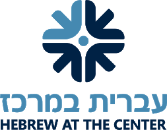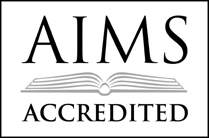Guiding Children to be Empathetic Thinkers and Doers – The Rock Creek Park Tzedakah Box Project
May 16, 2019 by
In first grade, MILTON students engage in an in-depth study of Rock Creek Park that includes its flora, fauna, and history, as well as the problems that the park faces. This year, students were interested in adding a tzedakah component to the Rock Creek Park unit. Students formed a tzedakah committee, and determined that they want to build awareness and support for Rock Creek Conservancy, an organization working to restore and protect Rock Creek and its parklands, which serve as a natural oasis for people and wildlife.
Applying Research and Design Thinking Skills: The children worked with Judy Kimel, MILTON’s South Campus atelierista, who often works with small student committees on extensions of larger academic units. To start, first graders applied a Design Thinking approach toward the creation of a Rock Creek Park tzedakah box. After much research and thought, the children made initial prototypes based on tzedakah boxes they researched online. Next, they interviewed Netali Goldman, the South Campus Office Manager, to understand the optimal size and shape for their project as the tzedakah box would eventually be placed on the front desk. They also had to use their math /measurement skills. Then the first grade students identified specific criteria which they used to carefully select the appropriate materials to build the box. Students noted that “it needs to be strong so it will last,” “not too heavy so you can’t carry it, but strong enough to hold the coins,” and that they “shouldn’t use materials like clay or glass because the box could break.” As part of their research and collaboration, the children also investigated the type of lid they would use for the tzedakah box, thoughtfully considering the functionality of the lid and the ease for donors to make contributions. Their next step was testing the materials and their theories. Throughout this process, students had opportunities to fail forward as they realized that certain materials were too heavy, too sharp, etc. Based on this iterative materials selection process, the children determined that Plexiglas would be the best material for the new tzedakah box. They created a pattern based on the prototype the committee liked best and traced the pattern onto the Plexiglas sheets. Officer West assisted the children with the cutting and drilling. Then the students glued the sides together. They proceeded to add both beauty and functionality by creating a base out of wood and copper leafs as well as by adding a functioning lid.
Collaborating on a Custom Design: The first graders created a unique, custom-designed tzedakah box to share their learning and inspire action. The students began by selecting designs that reflected their extensive research on the flora, fauna, and history of Rock Creek Park. The committee divided into three groups, each focused on designing one side of the box – the fourth side would have a map of the park. Prior to finalizing the design onto the Plexiglas, the children created a draft and participated in peer reviews and critiques which they used to refine their artwork. They worked collaboratively to decide which design components to use from each sketch. After completing the final draft, the children chose materials to create their beautiful final design.
Instilling Jewish Values & Extending Learning: The extension of the curriculum through sadnah (studio) work and civic minded projects deepens our students’ learning. The Rock Creek Park tzedakah box project not only reinforced first graders’ academic learning, it reinforced Jewish values and civic awareness. Throughout the project, students engaged in critical thinking and problem-solving. They tapped into their intellectual and aesthetic creativity. The process fostered the development of social-emotional skills by providing opportunities for the children to take risks, fail forward, expand their thinking, practice effective communication, and collaborate. It was a hands-on learning opportunity to apply math skills and develop fine-motor skills. Just as important, the integration of the creative sadnah work into the learning offered the children a different language for expression. The project as a whole is a remarkable expression of their voice and vision, and a reflection of MILTON’s pedagogical approach that guides children to be empathetic thinkers and doers.






